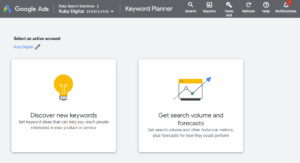As we move towards a new year, businesses are starting to think about their budgets for 2023. This includes planning for marketing expenses. Marketing budgets can be especially tricky to plan because there are so many variables to consider. You have to think about your goals, your audience, your platforms, and your overall strategy.
You should also take the opportunity to look at what has and hasn’t worked (and why) and prepare for likely upcoming changes in the digital environment. Is it time to shake things up and try something new, or regroup and focus on the channels that gave you the best returns over the previous 12 months?
In this post, we’ll break the process down so you can create a realistic and effective marketing budget for 2023 that will drive growth, help you tap into new markets, and outperform the competition.
The importance of a marketing budget
Before we get into the nitty-gritty of planning your marketing budget for 2023, let’s take a step back and talk about why budgets are so important to businesses. A budget is a plan that shows how you will allocate your resources (time, money, people) over a period of time. It ensures that you are making the most efficient use of your resources and allows you to track your progress towards your goals.
Creating a budget also forces you to think about your priorities and what you want to achieve. Do you want to grow your current market share? Enter new markets? Increase brand awareness? Drive more traffic to your website?
Your budget should be aligned with your overall business goals so that you can measure your return on investment (ROI) and adjust as needed. It’s also important to remember that your budget is not set in stone. As your business grows and changes, your budget should evolve along with it.
Should I really be spending money on marketing during a global recession?
During a recession, it’s still important to invest in marketing. Possibly even more important than usual. This is because you want to make sure that you keep your business growing, even when the economy isn’t doing well.
You can do this by spending money on marketing that will help bring in new customers who might not have heard of your company before. You also don’t want to lose ground to competitors at this crucial stage. Read more about this in detail on our post: How to Recession-Proof Your Marketing and Thrive During a Downturn.
How much do companies spend on digital marketing?
Broad Media’s 2022 Marketing Budget and ROI Report gives us some interesting insights. Average annual marketing budgets varied from:
- under R100,000 (42%)
- between R100,000 and R999,999 (23%)
- R1m to R5m (16%)
- R5m to R10m (7%)
- Over R10m (12%)
Also of note is that 46% of respondents considered their marketing budget too small.
Is digital marketing cost-effective?
In South Africa, digital remains the most popular and most effective form of advertising, with 82% of businesses reporting it gives them the best ROI for their marketing spend.
How much should a marketing budget be?
As a general rule of thumb, B2C businesses should be allocating at least 10% of their annual revenue towards marketing, although if you’re after more rapid growth, that figure should be higher. B2B brands can get away with less, but again, this depends on your specific goals.
What are you trying to achieve with your marketing?
Before you think about where to allocate your marketing budget for 2023, it’s important to get really clear about your goals, and how you intend to measure your progress. For example:
- Are you trying to get new leads, and how qualified do you need those leads to be?
- What kinds of content / advertising / media are resonating most with your target audience right now? If you’re not comfortable with any of these channels, how can you best establish a presence? Can you do it on your own or will you need specialist help?
- Are you looking to build brand awareness and recognition? If so, what’s your current benchmark and how will you track improvement?
Let’s take a look at this in action. Let’s assume we have two brands – one white-collar, B2B brand, and one focused towards younger consumers.
Brand A might best be served by focusing on SEO, Google Ads, and LinkedIn marketing.
Brand B will likely have more success with social channels like TikTok, Instagram, Facebook, YouTube and other social platforms primarily, then other channels secondarily.
Get the data!
As the famous expression goes, you can’t manage what you can’t measure. Before you can make any plans for growth, you need to establish some benchmarks. This means calculating your current conversion rates, and establishing where most of your best leads are presently coming from.
Armed with this information, it becomes a lot easier to see very quickly whether something is working or not, and adjust accordingly. Here are 5 levels of the sales funnel to pay particular attention to:
- MQL (marketing qualified leads) – Someone who has shown active interest in your offering
- SQL (sales qualified leads) – A prospective customer that your sales team can nurture. (Find out more about MQL vs SQL here)
- Meeting attended – Sales are busy closing the deal
- Opportunities – pipeline value
- Closed deals – actual revenue
Expect and plan for change
We live in interesting times! There are all sorts of factors that could have an impact on your marketing strategy. It might be worth finding or conducting a PESTLE (Political, Economic, Social, Technological, Legal and Environmental) analysis for your industry to see where you currently stand.

The takeaway however is that your marketing strategy and budget should leave room for change. The global economy and local events can and will all have an impact on how successful certain marketing strategies are, so be prepared to adapt, and have a backup plan in place.
In terms of your marketing budget, it’s a wise idea to reserve some funds for discretionary spending that will allow you to outmanoeuvre the competition when change inevitably happens.
Spend less by utilizing data you’re already collecting
Aside from how much you want to spend and where, your budget should also consider where efficiencies can be found. If you’re looking for a way to save money on your marketing efforts without sacrificing reach or effectiveness, utilizing first party data is a great place to start.
First party data is information that you collect about your customers and prospects through your own channels. This can include things like website activity, purchase history, email interactions, and more. Essentially, it’s any data that you already have on hand that can be used to inform your marketing efforts. And the best part is, it’s free!
There are a number of ways that you can use first party data to improve your marketing efforts and save money in the process.
- For starters, you can use it for email marketing. If you have a database of customer email addresses, you can reach out to them directly with special offers and promotions.
- Additionally, first party data can be used for retargeting ads. This means showing ads specifically to people who have visited your website or interacted with your brand in some way.
- First party data can also be used to create “lookalike” audiences (new prospects who are similar to your existing customer base) and to hone your interest targeting tactics.
The easiest way to aggregate this data is through CRM (Customer Relationship Management) software.
How to put a marketing budget together, step by step
Here’s our suggested process:
1. Establish your goals and benchmarks
The first step in creating a marketing budget is to establish your goals and benchmarks. What are you trying to achieve with your marketing? Do you want to increase brand awareness, drive traffic to your website, or generate leads? Once you know what you want to achieve, you can start thinking about which channels will help you reach your goals. Each channel has its own strengths and weaknesses, so it’s important to choose the ones that are most likely to help.
2. Know where you’re coming from
Before you can start putting together a marketing budget, you need to know where you’re coming from. Take stock of your current marketing spend, performance, and output. This will give you a good starting point for putting together your budget.
3. Make a business case for the marketing budget
Once you have an idea of your goals and current situation, it’s time to make a business case for the marketing budget. This is where you’ll lay out the reasoning behind your budget request and show how it aligns with the company’s overall goals. Be sure to make your benchmarks relatable to all stakeholders so they can see the value in your proposed budget.
4. Use the tools available to you
There are a number of great tools available for putting together a proactive marketing strategy. Google’s Performance Planner and Forecast tools are especially useful here. These tools can help you estimate ad spends and track performance over time so you can make adjustments as needed.

5. Get buy-in from all stakeholders
The final step in creating your marketing budget is to get buy-in from all stakeholders. This includes upper management, finance, and anyone else who will be impacted by the budget. Once everyone is on board, you can start implementing your plan and tracking progress towards your goals!
As you put together your marketing budget for 2023, keep in mind that all channels should work together to create a cohesive customer experience. You should also consider how each touchpoint contributes to the buyer’s journey and what role it plays in driving conversions.
If you need help designing a digital marketing strategy that gets results, our team at Ruby Digital is here to help. We’re experts in all things digital marketing, from SEO and social media to email marketing and lead generation. Contact us today to learn more about how we can help your business succeed online!



